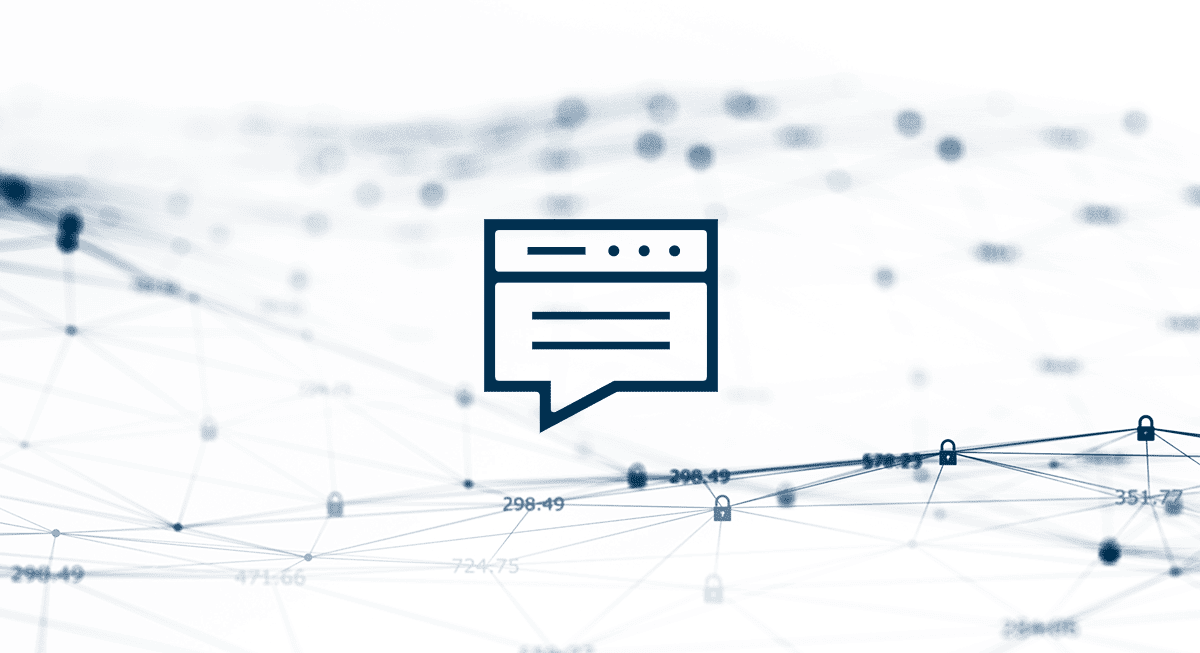If your organization is considering a threat detection solution, chances are good that you are wondering about EDR vs. MDR. The constant evolution of the cybersecurity marketplace can make it difficult for organizations to understand the differences and capabilities between different types of security offerings. This is especially true in the threat detection, investigation and response (TDIR) segment, where there’s not only been a continuing evolution of the technology, but also an arms race between vendors as they work to position their respective TDIR approaches as the most effective against cybercrime.
There are two types of solutions that have found their way to the top of the pack in recent years, both of which offer complimentary and contrasting capabilities: endpoint detection and response (EDR) and managed detection and response (MDR).
What is EDR?
Endpoint detection and response (EDR) is a host-based security solution that monitors endpoints within an organization’s IT environment in order to detect and respond to malicious and anomalous activity from internal or external sources.
While the definition of an endpoint can vary, it generally encompasses any physical device that resides at the end point of a network connection and can communicate via that network. This includes end-user computing devices, such as desktops, laptops, and mobile devices, as well as servers, some IoT devices, and more.
EDR is designed to actively safeguard those endpoints by detecting activity that may be indicative of a security incident, investigating those potential incidents, and remediating them as needed. Utilizing integrated monitoring technology, EDR solutions can detect not only clear malicious activity such as malware and ransomware, but also anomalous activity that is often an early sign of an attack, such as unauthorized access, attempts to elevate privileges, and use of shell code on an endpoint.
EDR operates through agent software that is deployed to hosts within the organization. That software monitors and records activity taking place on that particular system, with varying types of telemetry data conveyed from the endpoints to centralized analysis systems. There are many approaches here: Some solutions detect locally on the endpoint, some forward telemetry data to an on-premises control server, some forward data to a cloud resource for analysis. Increasingly, many EDR solutions take a hybrid approach.
While often compared to legacy endpoint protection platforms (EPP), EDR is not the same. EDR incorporates many of the aspects of EPP, such as using signatures as a method of detection, but EDR takes endpoint defense to the next level, incorporating additional detection mechanisms that are more advanced, plus providing investigation and remediation capabilities, depending on the specific solution.
Benefits of an EDR Platform
EDR offers visibility, insight, and the ability to respond to threats on endpoints across the extended enterprise. These three components not only help an organization respond to endpoint threats in near-real time but also allow security teams to better understand the enterprise environment and apply proactive endpoint defenses aided by the subsequent visibility. In fact, many organizations consider endpoint security to be the foundation of their overall security strategy. According to Arctic Wolf®’s State of Cybersecurity: 2024 Trends Report, 66% of survey respondents use one or more endpoint security solutions, including EPP, EDR, or an extended detection and response (XDR) solution, which is closely related to EDR.
Key benefits of EDR include:
- Behavioral-based detection: Unlike tools that only monitor for known threats, many EDR solutions use a behavioral detection engine to detect suspicious activities that may indicate an unknown threat by identifying activities on the endpoint that are in some way unusual.
- Lateral movement/threat escalation prevention: EDR helps security teams detect multistage attacks early, by identifying the specific techniques attackers use to leverage the endpoint to gain a foothold in an IT environment. This thwarts the threat actor before being able to move into other parts of the network and escalate an attack.
- Contextualization: EDR can help provide more context behind a detection, using threat intelligence and other third-party data to enrich its findings. This serves to increase the detail and confidence in a finding, which in turn helps enterprises tailor the response and apply future proactive security measures post-incident.
- Remediation speed: EDR can accelerate breach investigation reducing the time and cost of an incident, as well as limiting potential damage to an organization
Drawbacks of EDR
While protecting endpoints is paramount, EDR can sometimes fall short in a cybersecurity landscape where not only are threat actors utilizing sophisticated techniques to compromise endpoints, but also when the breadth of the modern extended enterprise environment — with more web-based applications, identity sources, and cloud-based resources – increasingly requires a more coordinated approach to TDIR. Suddenly, the endpoint has become just one target of many for a threat actor launching a cyber attack.
Challenges of EDR include:
- Excessive alert noise: Because EDR tools are not correlating data with other aspects of the attack surface, such a network or cloud sources, alerts may lack critical context, resulting in time spent chasing down the origin and an increase in false positives.
- Limited monitoring: As mentioned above, while endpoints are an important part of an organization’s security architecture, they are far from the only modern attack vector, and many sophisticated attacks can originate elsewhere in the environment, such as cloud resources or web-based applications. Relying on EDR may allow these attacks to escalate, as they will only be detected once infecting endpoints.
- Limited visibility: A best practice in modern security architectures is to take telemetry from multiple sources and correlates it to make real-time, informed decisions. EDR solutions offer an ongoing stream of valuable, detailed data about endpoint activity, but it represents only one view into the endpoint. Organizations that rely on EDR alone for endpoint security hence may unintentionally limit their visibility into the endpoint. In practice, EDR should be one of many telemetry sources that security teams (or security solutions) monitor. Correlating multiple sources of telemetry can lead to more precise, actionable detections.
- EDR is a tool, first: Like other security tools, EDR doesn’t solve for the challenges that have continued to plague security teams year after year – lack of personnel, lack of expertise, inability to fine-tune tools, and the inability to respond to threats 24×7. Set-up, configurations, and consistent adjustments for EDR solutions take time, budget, and expertise organizations may not have readily available.
To meet these challenges, another approach to TDIR has risen in the market: managed detection and response (MDR).
What is Managed Detection and Response?
MDR is a detection and response solution that combines human effort and expertise with a unified platform to provide comprehensive TDIR capabilities but delivered in the form of a managed service that ensures the right level of resources and expertise for key functions such as comprehensive monitoring, as well as threat detection and response.
MDR provides more flexibility than a self-managed TDIR solution like EDR. One key area of flexibility is in staffing. MDR providers offer staffing options catered to the needs of their customers, often in options that include business hours, weekdays only, all the way up to full 24×7 threat monitoring and response. This enables organizations to better monitor, detect, and respond to threats after hours, without needing additional internal security headcount or in-house expertise.
MDR services can be provided via various types of solution sourcing . Some MDR solutions offer dedicated products owned and operated by the MDR provider; this allows the provider to offer services at a manageable cost, but the customer does not get to choose which tools are used.
Alternatively, some MDR providers allow customers to choose from a limited selection of tools or even use the tools a customer owns and has already deployed in its environment. These options allow customers greater choice and flexibility in the type of services delivered but can raise the cost and complexity depending on the provider. But to be clear, the main differentiator for any MDR solution is the human element, e.g. the expertise of security engineers or analysts providing the service.
When comparing MDR vs. EDR, a key difference is in its visibility and monitoring capabilities. While this is not the case for every vendor on the market, EDR solutions are often limited to, or prioritize endpoint telemetry. This means even if an EDR solution can ingest telemetry from other sources, it typically will not analyze and provide alerts based on that data, which means key security events could be missed. MDR, however, generally incorporates telemetry from a variety of sources, including endpoint, network, identity, and cloud sources, providing broader visibility, more detailed and accurate alerting, and tailored response capabilities.
Benefits of an MDR Solution
An MDR solution offers advantages including, but not limited to, the extra hands-on-keyboards and expertise.
Benefits of MDR include:
- Broad visibility: MDR solutions can use a variety of approaches to discover, identify, and categorize assets, as well as collect data and security event observations from multiple sources of telemetry.
- Constant monitoring and response: MDR solutions can provide 24×7 monitoring with a human team that can respond to potential threats as they occur, even after hours or on weekends when an internal security team may be short-staffed or unavailable.
- Managed investigations: MDR providers often have their internal teams manage investigations into threats, relieving an organizations’ security team of the heavy lifting and sifting through various alerts, especially in the early stages of a threat where rapid investigations can make a major difference in the overall outcome.
- Guided Remediation: MDRs work with organizations’ security teams on remediation, offering speed, expertise, and efficiency.
Better use of technology: Having a built-in team of experts not only relieves internal security teams of the need to configure and maintain their detection and response tool but also opens the door for the MDR team to optimize that tech, enhancing the overall security posture.
Drawbacks of MDR
While MDR offers many advantages, as an organization evaluates different vendors and solutions, there are a few potential challenges to keep in mind. These are mostly related to putting your security solution, and outcomes, into the hands of a third party.
Challenges of an MDR solution include:
- Coverage and scope limitations: Some offerings may be MDR in name only; when it comes down to the coverage and scope, certain aspects of the network are excluded or deprioritized. Additionally, the offering may not integrate with or may overlap with certain parts of an organization’s existing tech stack, requiring a “rip and replace” situation to ensure coverage.
- Varying response capabilities: The effectiveness of the response component of TDIR offerings can be the difference between a threat stopped early, and a full-blown incident response. Organizations should scrutinize how an MDR provider responds to the threats it detects, what actions it can take, and how quickly it can execute. If an MDR provider alerts a customer to a threat at 3 a.m. but doesn’t follow up or take active response measures before the customer’s security team returns to the office at 8 a.m., that could pose a problem.
- Discrepancy with the human element: While MDR offers a managed human element, the scope of that can vary by vendor. Are there dedicated teams and/or named security experts with strong knowledge of your environment? How will you communicate with them? What is the overall scope of the management? The answers to those questions can vary by vendor and contract.
Which Detection and Response Solution Is Best for Your Organization
The effectiveness of any given detection and response tool can vary from one customer to another. The value and output comes down to your individual organization and your security and business goals, as well as the unique challenges of your IT environment.
If your organization is endpoint-heavy, EDR is an option to consider to elevate your security posture while focusing on what matters most.
If your organization’s attack surface has grown to include a considerable number of web-based applications, identities, and perhaps has a complex network that needs eyes-on-glass 24×7, looking at a MDR option might be a better long-term fit.
Additionally, this is not an either/or situation. Endpoints are a vital part of the IT and security environment, and no matter the origin, many attacks will turn to the endpoint for execution and escalation. But as attack surfaces grow and security needs adapt, organizations can’t ignore rising risks from their identity sources or cloud infrastructure. It comes down to what your organization needs first – security or support?
Detection and Response with Arctic Wolf
Arctic Wolf believes that no matter where you are in your security maturity journey, you deserve both world-class security and support. As such, we offer both endpoint and MDR solutions that allow you to protect your most valuable assets while working to operationalize your overall security functions.
Our Aurora™ Endpoint Security solutions offer outcome-driven endpoint security, combining the capabilities of modern EPP and EDR solutions to deliver market-leading AI-driven prevention, detection, and response. Designed to be easy to use and highly effective, whether on its own or with 24×7 monitoring, Aurora Endpoint Security offers flexible deployment options so you can strengthen your defenses and ultimately, protect your organization from costly breaches.
But the endpoint is not the end when it comes to detection and response. Arctic Wolf Managed Detection and Response is here as your organization progresses on their security journey to provide 24×7 monitoring of your networks, endpoints, identity, and cloud environments. With broad visibility, managed investigations, guided remediation, and more, Arctic Wolf MDR is here to provide consistent support and industry-leading technology as your organization expands and threats evolve.
Learn more about Aurora Endpoint Defense.
Explore the value of security operations.






